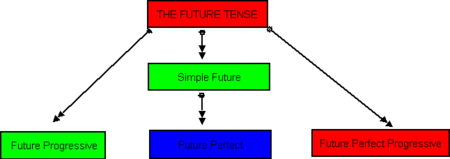Future simple
Title
Introduction
Like the present and the past,the simple future tense consists of four types-the simple future tense,the future progressive or continuous'the future perfect and the future perfect progressive
By the end of the lesson, the learners will be able to:
|
Lesson of content
The simple future tense expresses an action or condition that will occur in the future.In other words, we use this tense to express an action or condition that will take place after the present.To construct a sentence in the simple future tense,we use will or shall together with the base form of the verb or the infinitive.For example;
- They will pass the exam.
- Musu will do the home work.
- We shall buy the books.
The actions expressed in the above examples are yet to take place. We can also express simple futurity without the use of "will" or "shall";the phrases "going to " and "about to" can be used together with the present forms of the verb "Be" and the base form of the verb to express the simple future tense.Let us look at the few examples below.
- John is going to visit the library.
- Our teachers are going to buy a car.
- Mr Sowa is about to start the lesson.
- we are about to start the exams.
In the above examples,all the actions expressed are yet to take place
Msowah 15:32, 26 February 2007 (CET)
